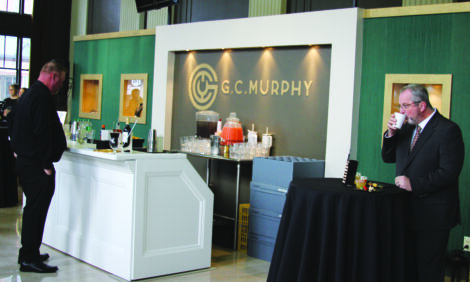Southern Local students return to new leaders
SALINEVILLE — As Southern Local Schools resumed on Sept. 2, some students noticed familiar faces as new leaders.
Jess Krulik stepped into the role as principal of Southern Local Sr. High School with Jordan Wrask now acting as principal at the junior high. Krulik had served as a teacher for the past 16 years and was assistant principal in the high school building for the past three, while Wrask has spent three years at Southern with two as assistant principal at Southern Local Elementary. Both said their familiarity with their buildings and students has eased the transition and they were eager to begin on a positive note.
“The whole office has a new staff with Kenadee Pezzano as the sole school counselor, Jordan moving up and two new secretaries. We had actually planned this move last year and we’re set up,” Krulik said. “[Former Principal Rich Wright] gave me a lot of freedom. I took care of academics and he took care of attendance, then we divided the discipline. I’ve been working on attendance and [Superintendent Tom Cunningham] has shown me the ropes and helped me out a lot.”
“It’s exciting,” added Wrask. “This is more my realm. I had taught sixth grade and high school, so this age group is more my level and being an elementary assistant principal has helped to prepare me. I can bounce a lot of my ideas off of Jess and we can really make things our own and use our vision so it’s a fresh start.”
So far, they have held discussions on project-based learning and the real-world concept of allowing kids to explore potential pathways.
“[Junior high teacher] Amanda Wrobleski does a great job in her science class. We want to help students find a joy of learning and get a student and parent voice,” Wrask said. “At the end of the last school year, I sent out a survey on what they would change so they have a say. A lot of them were for hands-on learning. The more you can engage them in hands-on learning, the better.”
Hopes are to have more opportunities built into students’ schedules so they can explore them at the Utica Shale Academy. Meanwhile, Krulik commented that the school is using data to drive instruction and discipline, but there is a focus on career-technical education with lessons embedded into the career-based instruction (CBI) program. CTE credentials are available for pathways to give students advantages as they enter the workforce.
“This is the first year we’re putting it into place and embedded it into classes,” Krulik explained. “I think it’s great to expose kids to different pathways.”
Sophomores will earn CPR certification through their science class, which also meets requirements for graduation. Each grade has CTE embedded in one of their classes so students in grades 7-12 benefit, plus career exploration is being offered to eighth-graders so they can view pathways of interest and obtain credentials.
Krulik said much of the planning had been underway and officials were working on a wide range of issues. For one, he and Wrask have seen a significant jump in enrollment thus far, estimating one new student per day throughout the month of August. He said the elementary school faced a similar situation, but it was a good problem to have.
“We’ve had 30 kids in 30 days. I’d almost say it’s an average of a kid per day. Our sixth-grade enrollment shot up. Last year, it was at 59; this year it’s at 66,” Krulik continued. “We’ve had a lot of calls and people came in to talk about our Indian Academy online hybrid program. The word is out there.”
Wrask noted more changes with partnerships formed through the Ohio State University Extension Office, Columbiana County Juvenile Court’s truancy program and the Stay in the Game initiative with the Cleveland Browns to bolster attendance.
“All schools are facing attendance issues and truancy is around 20-30 percent around the state,” he added. “Kids who miss two days per month have lost 18 days. They almost miss an entire month. We’re attending a training session and will provide resources to families and reach out before absences begin to add up. It’s important to be proactive and not reactive about approaches.”
Adjustments also were made to the bell schedules, most notably the combined lunches from two sessions to only one. In this case, time is split with a group of students having their meal in the cafeteria and the other spending time in the gym. They would then switch for the remainder of the lunch period.
“Because the period length is so long, we’ve given kids intramural time, work time and lunch. We increased time periods slightly with gym time and intramurals and time to sit in the bleachers and work on academics. We did this at the junior high and it was successful. The kids really liked it,” Krulik said. “The kids get to exercise and have activities with intramural leagues. We’re rolling that out at the high school and it’s an experiment. We’ll make changes when we need to. Everything we’re doing is with intent and purpose. It’s all data-driven.”
Moreover, officials are looking to give students even more of a voice with the formation of a principals’ advisory council.
“I want to see the students take more ownership in what happens here,” Wrask said.
Krulik said the leadership change has been seamless and he was positive about the future ahead.
“Jordan and I are working together, and it’s cohabitational but fundamentally solid. We’re very prepared.”

